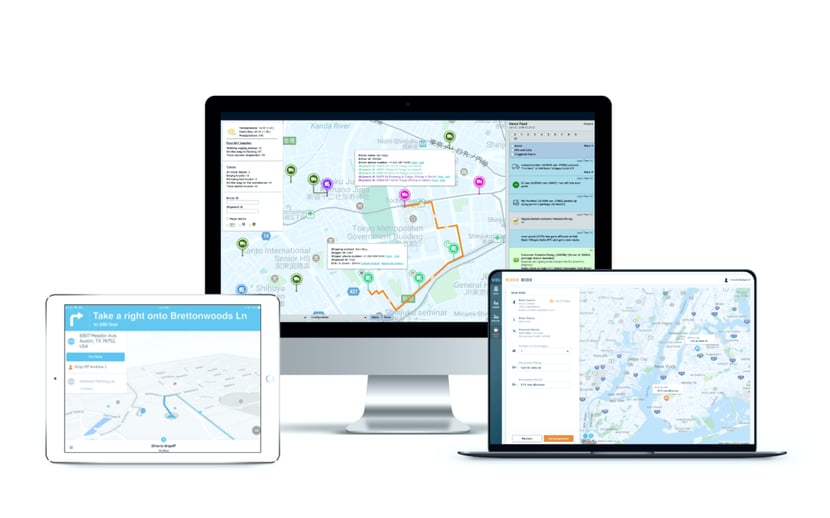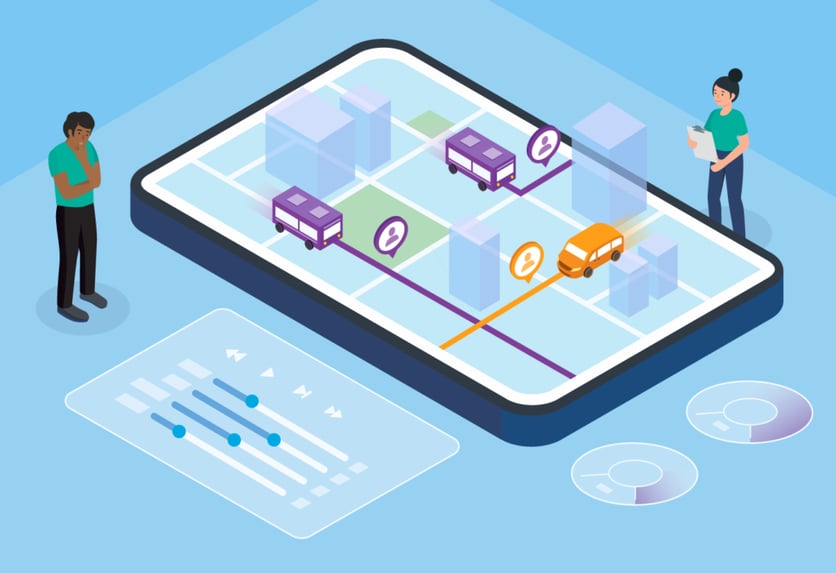We face enormous challenges in transportation. Our infrastructure is overloaded, while traffic and congestion continue to balloon. In the U.S., transportation has become the No. 1 cause of greenhouse gas emissions. We need to do better, and it starts with improving public transportation. While there have been incremental service improvements in public transit from innovations like mobile ticketing and real-time tracking, virtually all bus systems still provide the same static routes and schedules that have struggled to sufficiently attract riders for decades.
“The traditional role of public transit is changing as disruptive technologies are forcing transit agencies to evolve and be more demand responsive,” says RTD Assistant General Manager Bill Van Meter in KPMG’s latest study on mobility. “Agencies need to look at themselves as mobility integrators that promote convenience and connect seamlessly to other mobility options. Agencies that simply focus on providing traditional fixed-route service may become less relevant as customers demand more and better options.” A six-month public survey revealed that the service had driven a reduction in single-occupancy vehicle travel, improved satisfaction of public transit, and increased use by low-income riders to access basic needs. The KPMG study reflected what cities, transit agencies, and operators on the ground have already come to realize: that, when properly designed and executed, flexible microtransit services can help eliminate transit deserts, create first- and last-mile connections to transportation hubs, and provide convenient paratransit — all while getting people out of privately driven vehicles.
But there’s no one-size-fits-all approach to designing a microtransit service. The most successful microtransit services are structured to meet the specific requirements of the local community. Every kind of environment — whether it's a big city, small town, resort community, car-oriented suburb, or rural area — faces different transportation challenges, which makes it crucial to design a custom microtransit solution oriented around KPIs that speak directly to each project’s needs. 
Customize the Project’s Goals and KPIs
In Los Angeles, LA Metro identified three distinct areas where access to existing Metro Rail stations was limited, particularly for low income riders. “Many Metro users face a challenge getting from home to the station and vice versa. They need a quick, easy, and inexpensive door-to-door solution," said Los Angeles County Supervisor and Metro Board Chair Sheila Kuehl.
In Arlington, Texas, city leaders were looking for a way to provide public transit to residents in order to help the city achieve its priority to Enhance Regional Mobility and better connect residents to jobs, cultural and educational opportunities, shopping, and other everyday needs.
Clearly defining the project’s goals helps to establish a focused set of KPIs to evaluate the project's success. These metrics can range from measures of overall demand (number of trips), quality of the service (rider wait time), financial sustainability (cost per ride), service efficiency (vehicle utilization rates), sustainability (single occupancy vehicle trip reduction, VMT), and customer satisfaction.
In West Sacramento, California, data gathered from the city's "West Sacramento On-Demand" project helped to determine whether or not the program should be renewed. Within a few months of launch, the service surpassed early ridership estimates by 50 percent and continued growing. Additionally, a six-month public survey revealed that the service had driven a reduction in single-occupancy vehicle travel, improved satisfaction of public transit, and increased use by low-income riders to access basic needs. The project has subsequently been renewed for another year with an increase in operational budget to expand the service zone.

Design the Service Around These Key Goals
Once a project’s goals and KPIs are clearly defined, multiple other service parameters can be customized to ensure each microtransit deployment is built for success.
Selecting the vehicles: Selecting the right vehicle with the appropriate passenger capacity and other features is an important step in creating a service that is set up to successfully meet its goals. Questions every partner should consider include the need for wheelchair accessible vehicles, minimum required vehicle capacity, onboard amenities (WiFi, charging points), fuel efficiency, and how these vehicles will fit into the transit authority's larger fleet.
Operations: Microtransit services require powerful matching and routing algorithms to enable efficient on-demand shared transport services. Deciding whether to license this technology under a Software as a Service (SaaS) model, in which the actual deployment is run by the city, transit agency, or organization; or electing for a Transit as a Service (TaaS) model, in which a provider like Via operates a turnkey service on behalf of the agency, is another important factor to consider. Some partners choose to blend the two — for instance, partnering with a third-party transport provider like Keolis, Arriva or Go-Ahead to operate the service and vehicles while using specialist technology like Via’s to power the service.
Payment Methods: If a goal of the project is to extend mobility access to communities who are unbanked, it’s vital to ensure the service can accept a variety of payment methods such as cash, voucher payments, and a full integration with the transit system’s native payment system. King County Metro and Sound Transit have fully integrated their new on-demand mobility service with the transit system’s ORCA Card, allowing customers to use a single payment method across the full King County transportation network. On-demand rides are automatically applied as a transfer toward a trip on a bus or a Link light rail train. "This project is a boon to Sound Transit’s mission: Connecting more people to more places,” said Redmond Mayor and Sound Transit Board chair John Marchione. “The innovative partnership with Via looks to a future where on-demand services work seamlessly with mass transit and builds ridership.”
Booking Methods: The project’s goals can also inform the decision of how riders should be able to access a ride. In addition to app-based booking, some projects may also chose to integrate dial-a-ride phone capabilities or even kiosks at local train stations in order to enhance the service's accessibility. This is especially important if a key goal of the service is to service low-income neighborhoods, seniors, or residents without access to a smartphone.

Find the Right Partner
It’s one thing to power a dial-a-ride service with a few vehicles; it’s another thing entirely to power a microtransit service at scale with dozens or even hundreds of vehicles delivering hundreds or thousands of rides every day. The ability to do the former usually doesn’t transfer to the latter — as the number of vehicles and rides increase, the number of possible rider/vehicle assignments and routing options grow exponentially, which requires both an algorithm and automated service management tools built to handle scale.
Moreover, it’s important to find a partner that can provide product features that are specific to a transit agency’s public mission. Will people who go to recurring medical appointments be able to pre-schedule rides for themselves and, if necessary, for caretakers too? Similarly, will people in wheelchairs be able to request wheelchair-accessible vehicles? What about low-income customers — will they be able to access the service if they don’t have smartphones or credit cards?
Lastly, the most successful microtransit services are on-demand — customers get rides when they want them — and fully dynamic, meaning there are no static routes or schedules. Powering a flexible service that is continuously optimized in real time is a big technical challenge. Transit agencies should find a partner who is not only up to the challenge, but proven in multiple markets they know how to deliver results.




%206.png?width=71&height=47&name=The%20Buzz%20Blog%20Hero%20(1750%20x%201200%20px)%206.png)